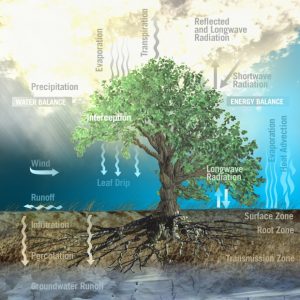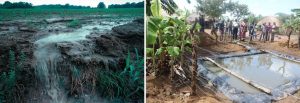7. Runoff and Water Erosion
Having considered the process of infiltration in the prior chapter, we are now ready to move to the next processes in the soil water balance—the interconnected processes of runoff and water erosion (Fig. 7‑1).

At the outset, it may be helpful to consider the value question: is runoff a good thing or a bad thing? The answer depends on the context. For example, runoff from cropland is typically undesirable because it results in reduced water availability for the crop, erosion of fertile topsoil, and pollution of surface water bodies with sediment, phosphorus, and other contaminants (Fig. 7‑2). In contrast, runoff from uncultivated or impervious areas can sometimes be beneficial when captured and stored for later use. Such water harvesting strategies may be key solutions to meeting critical water challenges in developing regions such as sub-Saharan Africa [1] and even in major metropolitan areas like Sydney, Australia, located in arid or semi-arid regions of developed nations [2]. Runoff is also one of the main sources of water to surface water bodies, so any soil or water management practices that influence runoff are likely to influence surface water quantity and quality.


